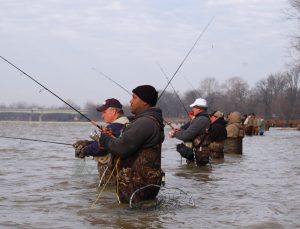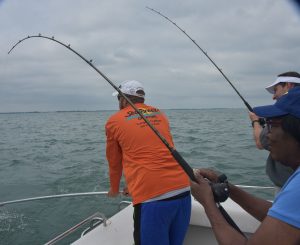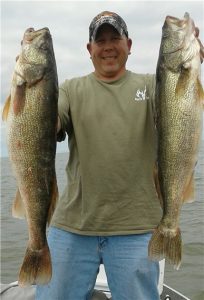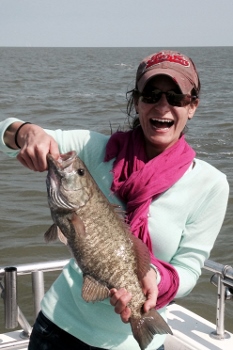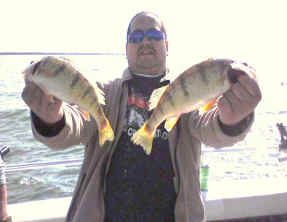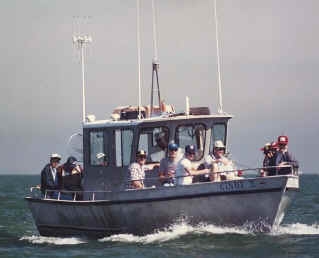Lake Erie western basin fishing reports Port Clinton, OH
June 21, 2019 Western Basin walleye fishing report Port Clinton, OH
Lake Erie walleye catching is as good as it gets! Limit catches pretty much daily! Walleye fishing like the early 80’s. Everyone is catching limits just some get them quicker than others.
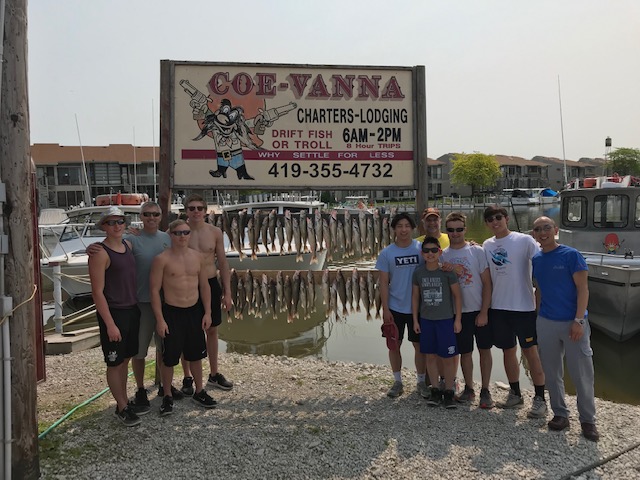
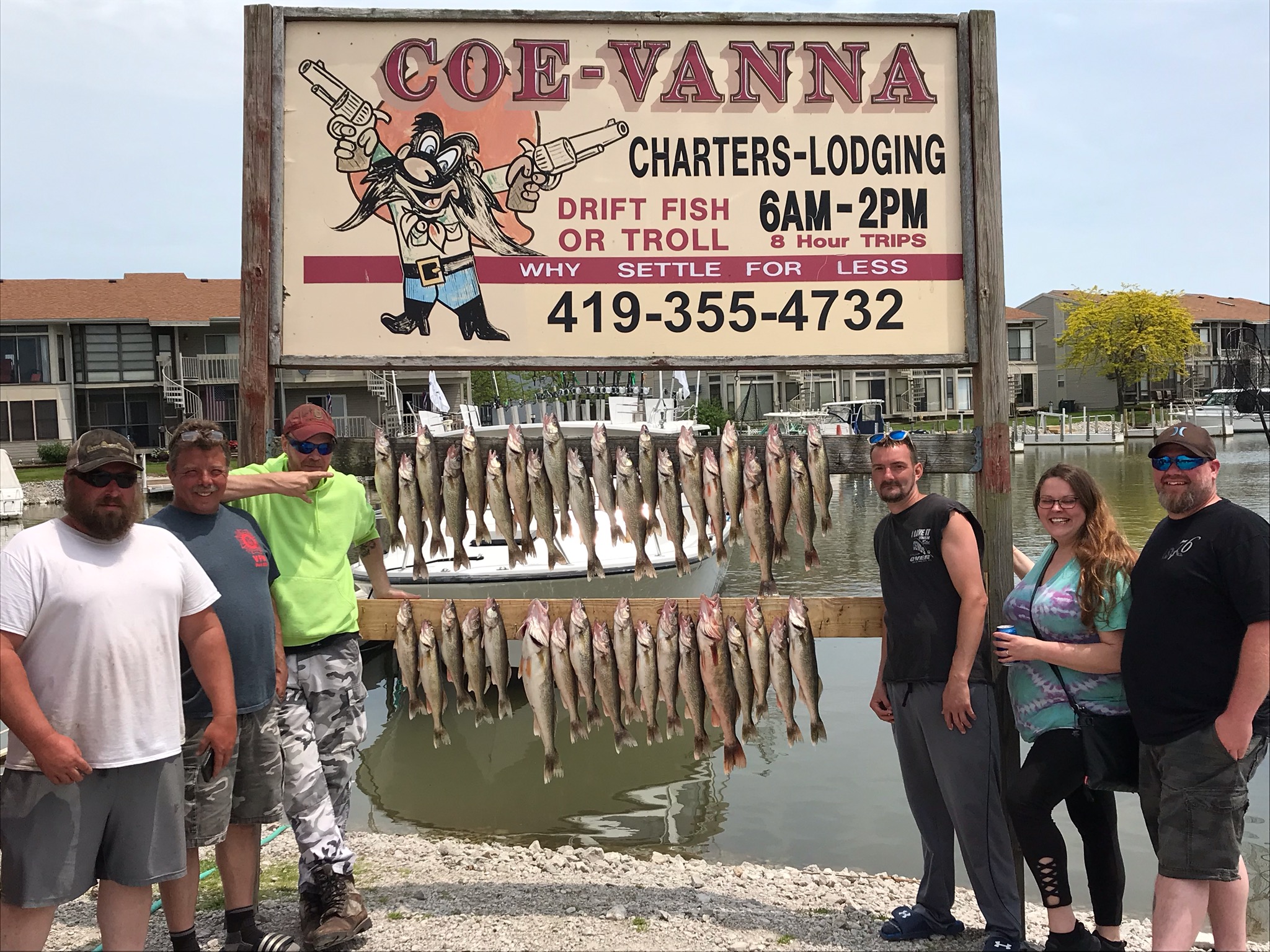
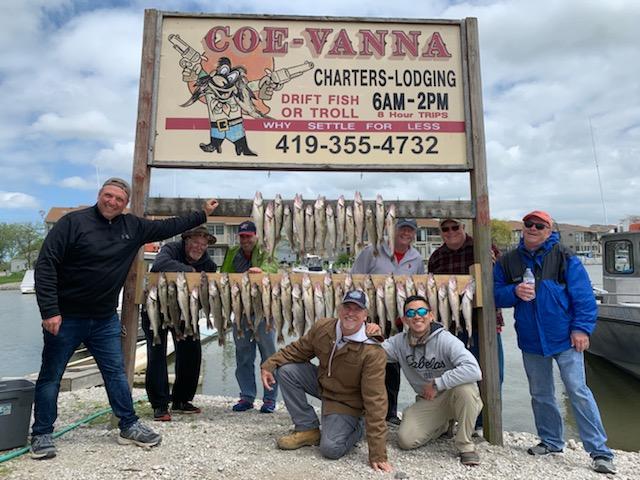
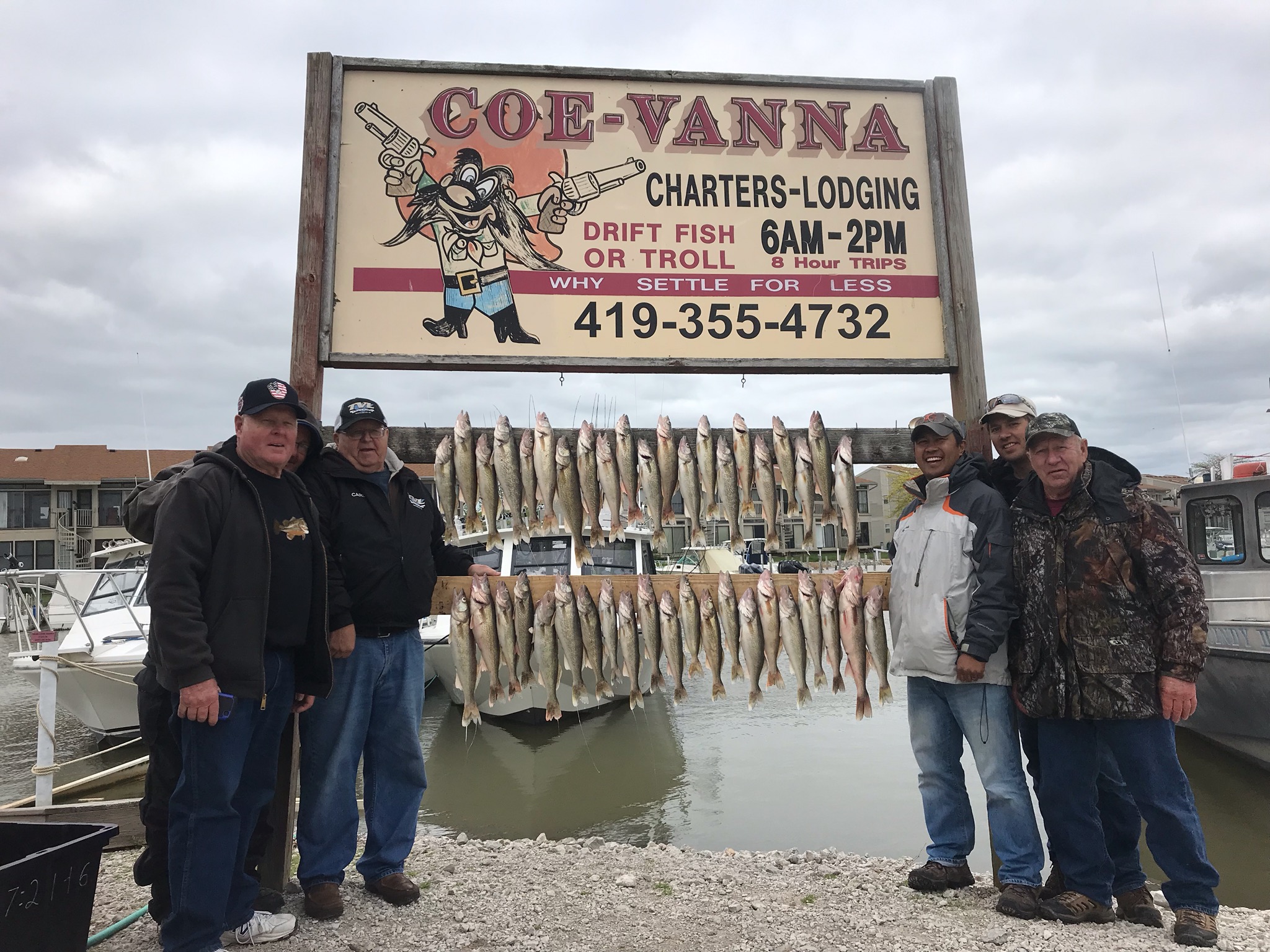
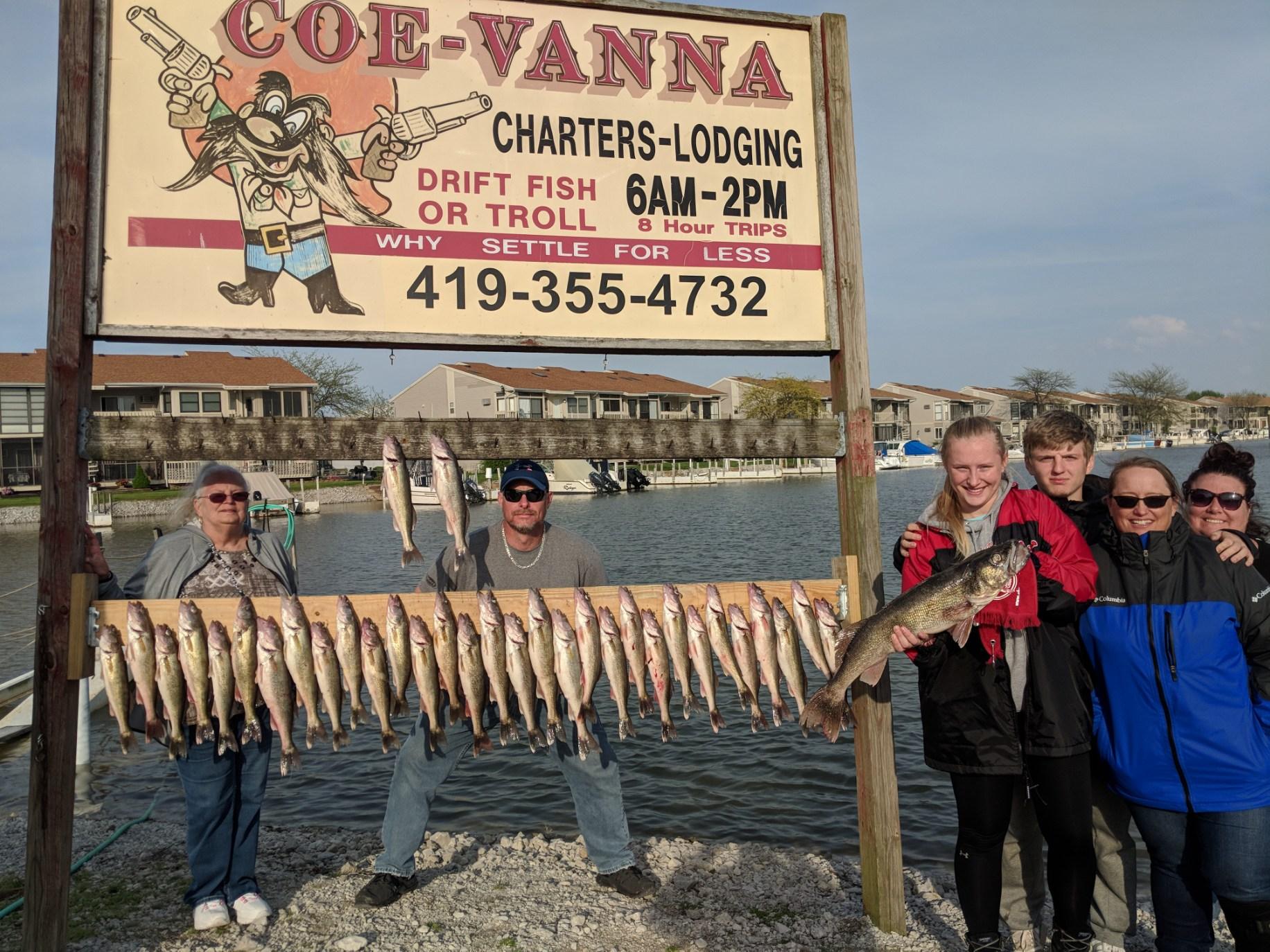
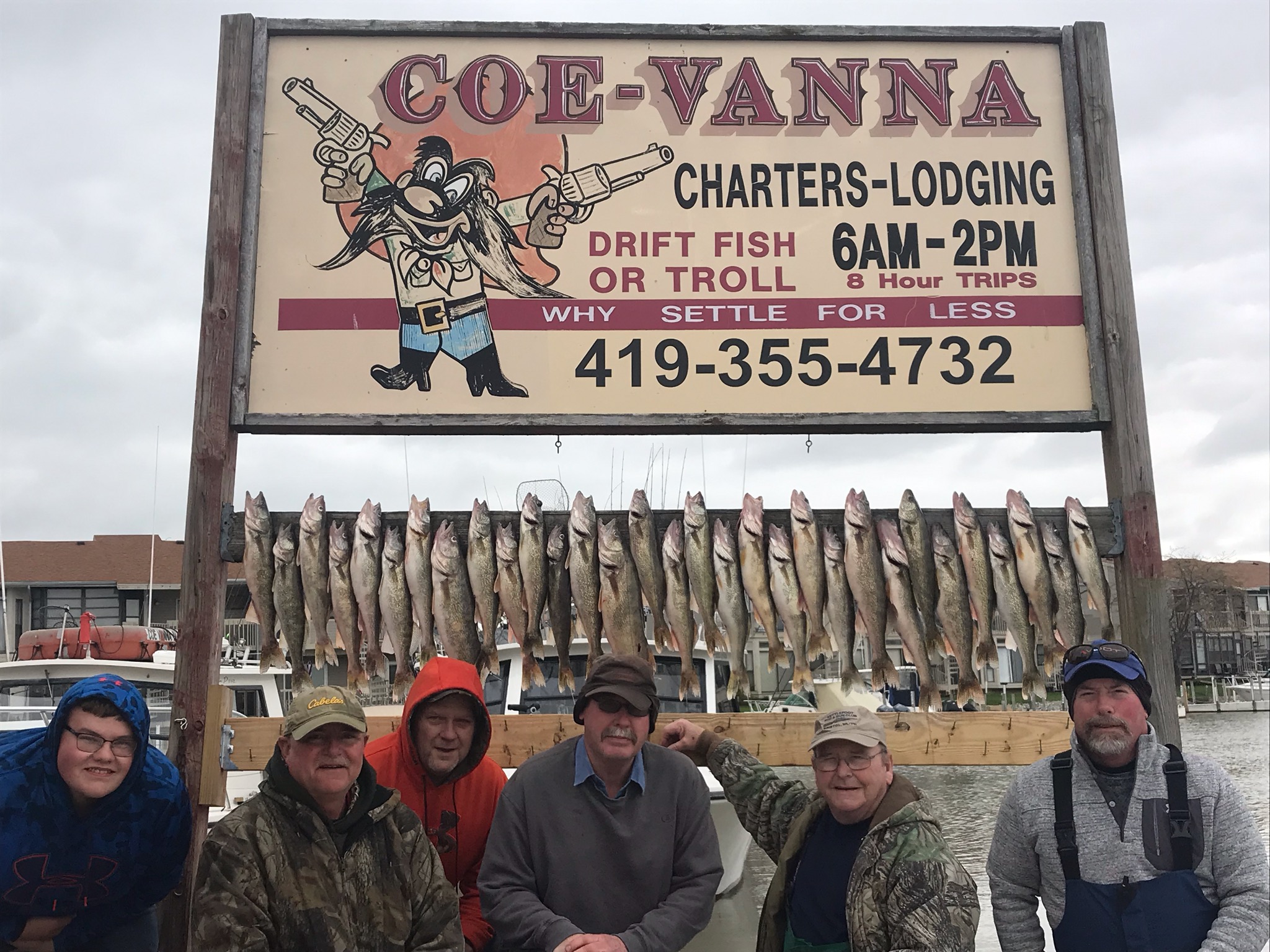
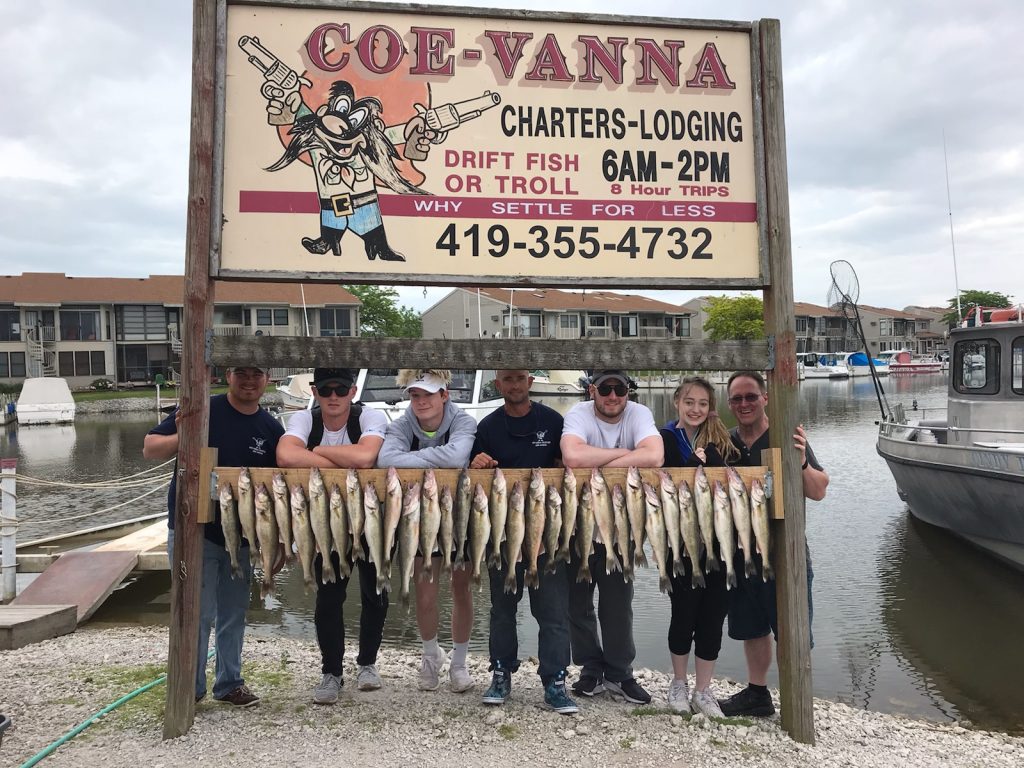
Lake Erie Fishing Report May 21st.
Western Basin Port Clinton Ohio.
Walleye fishing has been good when we get the weather. With the abundance of walleye that there are when the fishing conditions are right chances are you won’t have to go far to catch walleye. East of the Bass Islands Short Reef ,American Eagle, Monument Bay and near the Canadian border from Middle Bass Island to Middle Island.
Clinton Reef all along the Picket Fence, D can, F can, L can all the western basin reef complex. The lake temperature is just getting right for Spinners It has been mainly a bouncer bite soon walleye will be able to chase a spinner down. Lake water temperature is 54 and it needs to get to about 60 for the fish to get more aggressive. The lake temperature being so cool the western basin will hold plenty of walleye this summer.
Captain Dave
May 4 2019
Walleye fishing spotty to good . Early is the key however pick your spot wisley. Lot of days the cooler is filled in the first hour and 1/2 miss that window and you may come in short.
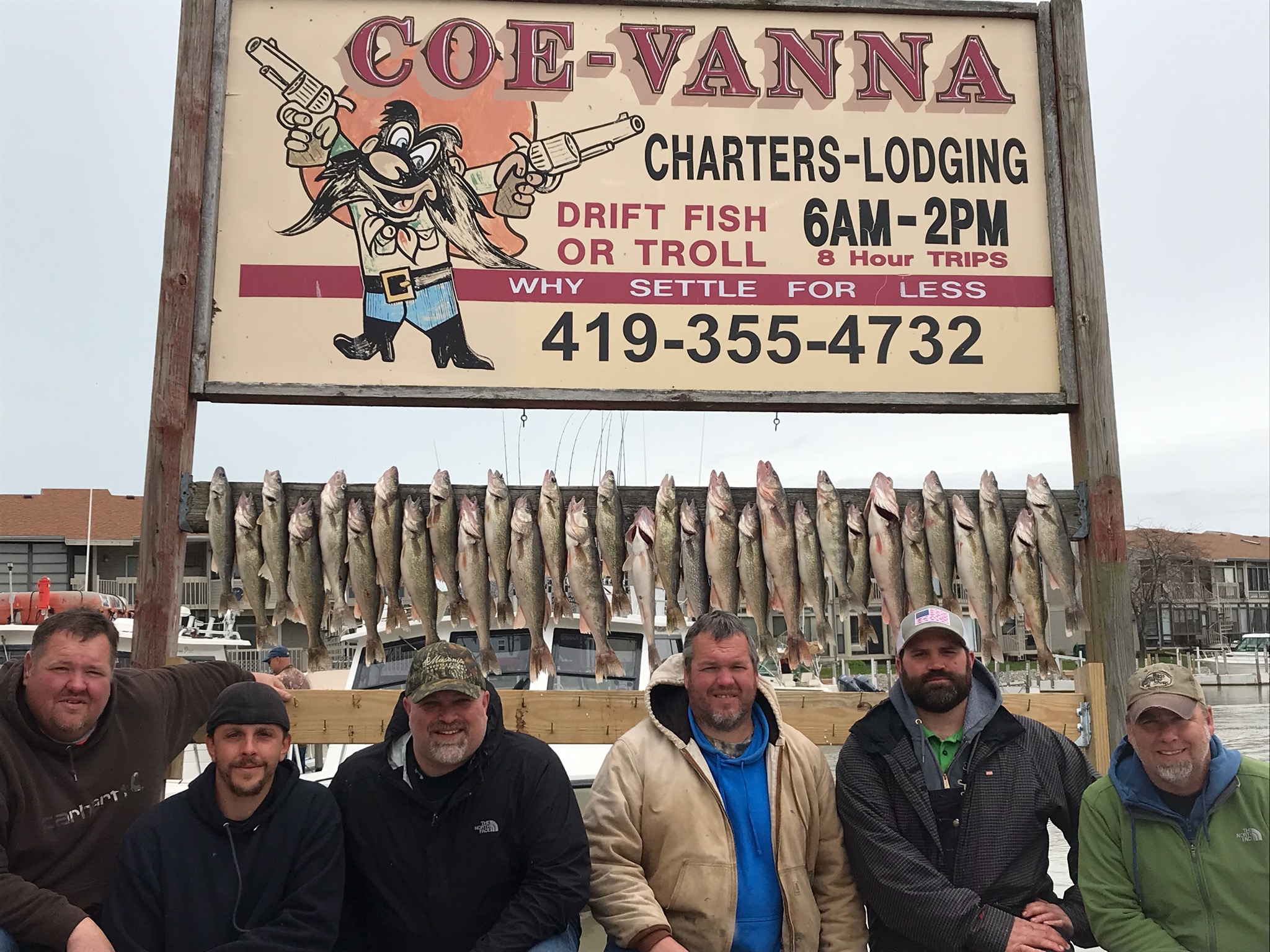
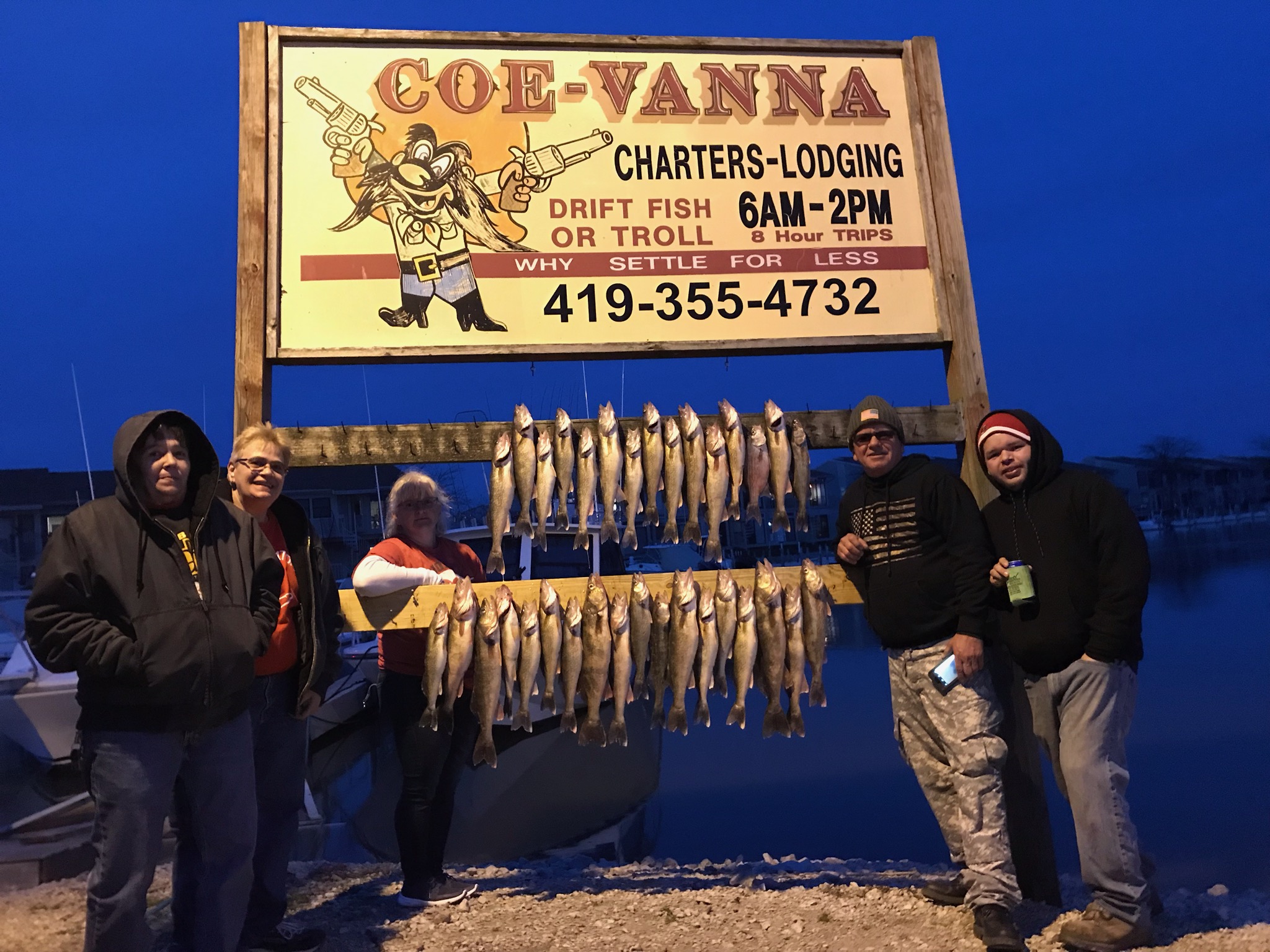
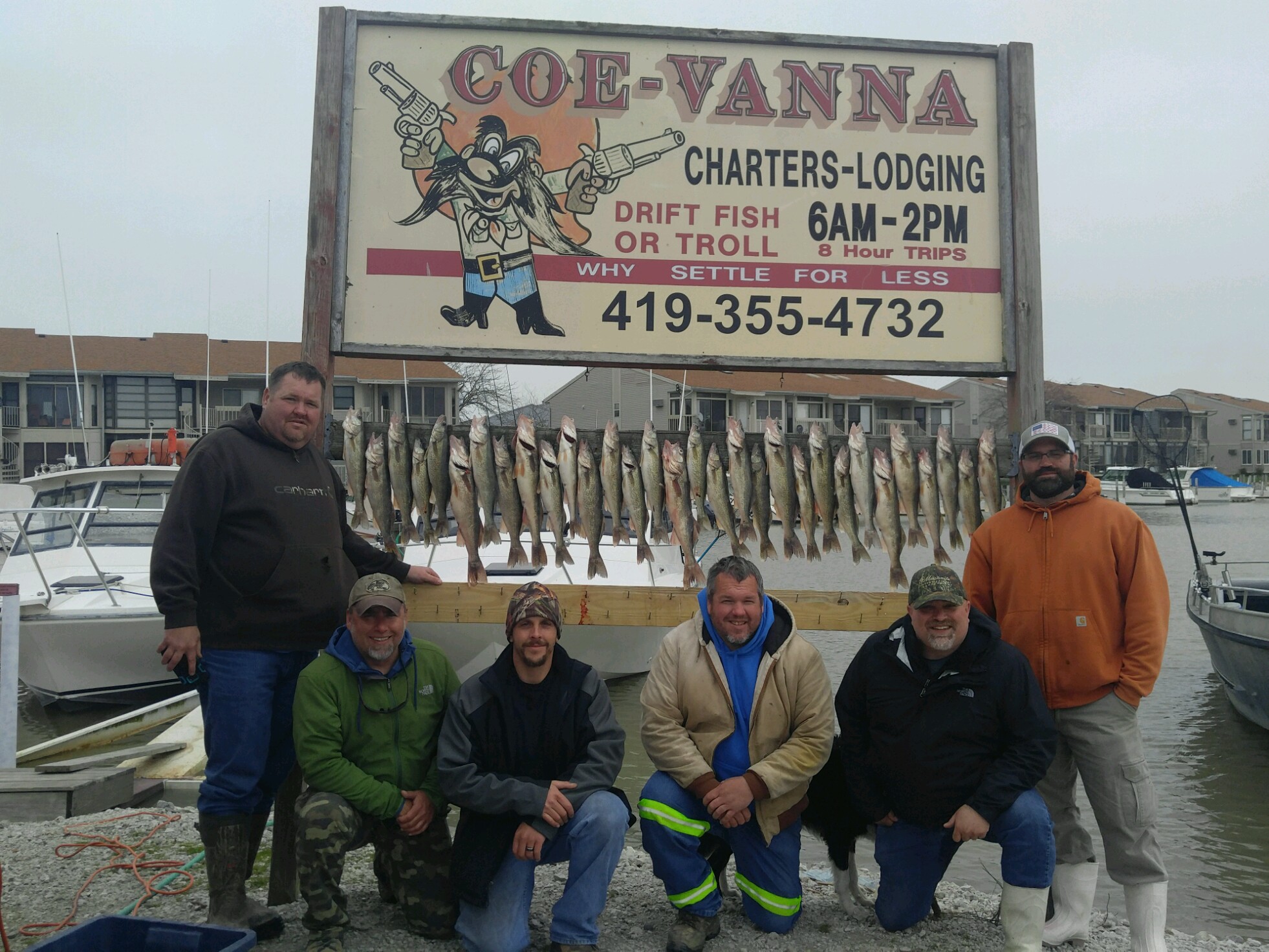
Jig fishing around and near the reefs still good spinners are working as well as bottom bouncers. Trolling Bandits working well also. Most of the trolling has been east of Perry’s Monument on South Bass between there and Kelly’s. Jig fishing- Buckeye Reef, West Reef, Gull, Mouse Island Reef -Short Reef as well as the western basin reef complex. Toledo Light and the Pear has been good when we get off a east wind. Which means not much there so far this spring. Walleye Spawn is a little behind we are in transition now between jig fishing and spinners and this will continue for about two more weeks. So remember bring your night crawlers- keep the bases covered.
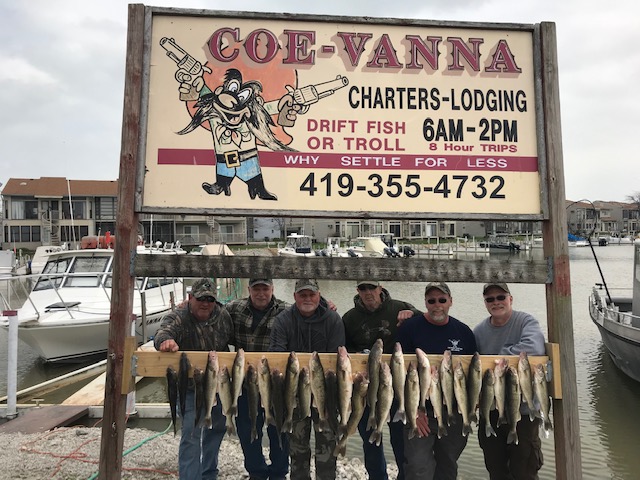
April 19 -Lake Erie Walleye fishing Report
Western Basin Port Clinton, Oh
Catch the weather and catch lots of walleye. Catching the weather this April has been like playing the lottery. Catch the weather and catch walleye.
Drift fishing 3/4 ounce jigs with stinger hooks mainly on hard bottom Locust Point, Cone, Crib, Toussaint, Niagara reef west of the Islands and West reef on a east wind. Six to 14 feet has been the best and mid day 16 to 24 feet. Zebra muscles are active now as the water temperature is close to 50 degrees. Zebra muscles filter and clean the water in the matter of a few hours. Remember they clean the water from the bottom up so just because the surface looks dirty doesn’t mean that the water near the bottom is. I judge bottom clarity by the looks of the fish. Muddy water fish look pale to yellowish.
There has been very little fishing near K can and west due to the make up of the bottom which is mainly clay and sand so the water stays dirty. The up coming forecast is for the weather to change favorable winds and warmer weather. Tight Lines and Keep um Hooked!
Capt. Dave
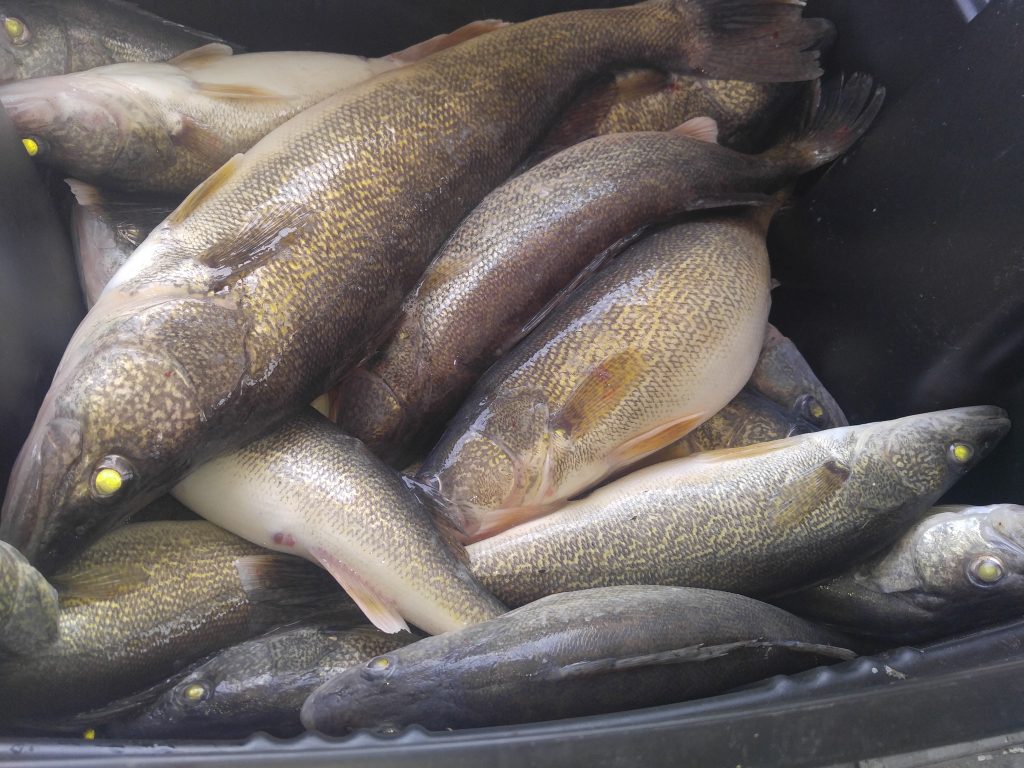
April 7, Lake Erie western basin walleye fishing report
Port Clinton, OH
East wind and murky water made for tough fishing Saturday morning for most.
Sunday morning the water cleared up just enough and caching improved. East of K can 14 to 18 feet of water. Locust Point, Crib, Toussaint and south of Toussaint, Niagara and Round.
Hair jigs 3/4 Oz black/ purple/ and firetiger.
Trolling Bandits
D can to Niagara with the big boards.
The main spawn is underway now and the next two to three weeks will be awesome if we can get some decent weather.
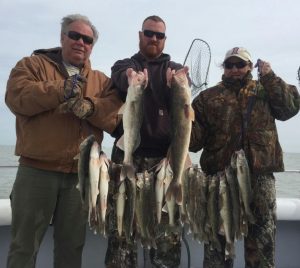
February 11, 2019
Lake Erie Walleye Fishing
Walleye Charters Begin at Ice Out – April 1.
Spring Jig fishing on Lake Erie catch numbers as well as size!
Trophy hunters – Cool water Big fish.
Where else can you turn 100 plus walleye in several hours with a crew of fisherman.
The average walleye will be 3 to 5 lbs with the occasional Trophy. Massive schools of walleye will be in Lake Erie western basin to spawn. Concentrated from there, the largest schools will be around on and near the western basin reef complex which is located 2 miles from our marina. This reef access offers us exceptional walleye fishing year round and especially in April as the walleye come to us to spawn! Like Bears in Alaska catching salmon – Jig fishing on Lake Erie’s western basin for walleye is much the same. Absolutely an overabundance of walleye waiting to be caught!
Fishing April on Lake Erie as fishing anywhere is all about conditions. Catch the weather with good Lake conditions and experience the ultimate walleye jig fishing on Lake Erie!
As walleye soar to record levels, anglers, charter captains, and tourism officials are thrilled
The walleye population in Lake Erie has exploded during the past few years — the fishing is considered to be great, and fisheries managers say it will likely get better in the near future as younger fish grow to keeping size.
“We just had, based on our trawl survey, the best hatch we’ve ever seen,” said Travis Hartman, Lake Erie administrator at the Ohio Division of Wildlife’s Sandusky Research Station. “We’re very pleased.”
Thousands of anglers migrate to the Maumee and Sandusky rivers for the annual spawn, Photo by James Proffitt
For better than a decade, the 2003 walleye hatch has been the legendary hallmark. And while the 2015 hatch was huge, it didn’t approach 2003 numbers. The next year’s 2016 hatch was mediocre, but then 2017’s walleye hatch was pretty good. But the 2018 hatch? The bar graph could be enough to make any angler (or fisheries biologist) swoon.
While the Ohio Division of Wildlife has released its survey results, officials with their northern counterparts haven’t yet publicly released their trawl surveys. The combined figures will likely be finalized in late February or early March. But word on the street – or rather, on the water – is that when combined, the numbers will definitely surpass the 2003 record.
Where do walleye spawn, and when?
Walleye spawn when water temperatures rise above 40 degrees, usually in late March or early April. They often spawn in shallower waters, such as bays and rivers like the Sandusky and Maumee.
Gravelly, sandy or rocky bottoms are ideal sites for females to broadcast eggs – up to 400,000. But the majority of Lake Erie walleye actually end up spawning on shallow reefs and nearshore waters in the lake proper, where males follow quickly behind egg-spreading females, eager to spread their love, too. Walleye tend to return to the sites where they were hatched to spawn.
Once eggs are fertilized and larval walleye develop on their spawning beds they’ve only a short window to make it or die, Hartman explained. After just a little more than a week when they are self-feeding, still inside tiny yolk sacs, they bust out. And they’re hungry.
“They need zooplankton (microscopic organisms) to eat and to survive. Right after they hatch from the sacs,” Hartman said. “But they need food and need it where they are right away.” If the zooplankton aren’t there, the tiny fish are doomed.
Can wildlife managers influence the walleye population?
No one has much control over zooplankton or walleye in Lake Erie’s roughly 10,000 square miles. The only control fisheries managers have over walleye populations, Hartman said, is harvest limits. Those levels, he said, have only been tweaked minimally in recent decades.
Prior to 2001, the limit had been 10 fish per angler per day, all year long. But biologists then realized the given walleye population couldn’t support such creel limits. “It was definitely reflective of the population,” Hartman said. “Things were looking pretty bleak at the time.”
It was then Ohio Division of Wildlife managers decided to cut the daily limit, per angler, to six fish. And they cut the limit even further during the spring spawning period, to just four fish per day. While anglers in general weren’t necessarily happy, they knew it was for the best.
During some years the hatch has been virtually non-existent. In 2002 and 2004, the trawl netted virtually no new walleye. The one trend that has caught biologists’ attention is that colder winters, especially those with significant ice coverage in the Western Basin, seem to help the hatch.
While the term “hatch” is applied regularly to trawl survey results, it may not be exactly accurate, Hartman said. That’s because the number of walleye that hatch could never be counted, since they’re too tiny to be counted.
What fisheries managers are really counting and calculating through trawls is the number of walleye that survived the spring and summer and made it to the lake. Those fish are termed young-of-year, and they’re the ones counted annually when they get scooped up in the scientific sampling.
Long-time charter captains have seen it all
Mel Fenger has been a charter captain on the lake’s Western Basin for more than three decades and has seen the ups-and-downs in walleye populations. He began taking folks fishing just when things got really good.
“It was about 1985, just three years after the 1982 hatch,” he explained. “We were catching fish from the third year of that hatch.” (for decades, the minimum size limit for ‘eyes has been 15 inches, which is the size they reach in their third year) “It went along there great into the 1990s,” Fenger explained. “Then it began to slow and you could see a definite change.”
Fenger’s correct, walleye fishing was slow for some years. And then came the 2003 hatch. And once again, three years later the fishing took off. Those fish from the 2003 hatch are now massive trophy fish measuring 25 inches or more. “That was great,” he said. “But after that there were some years where there was little to no hatch.”
Then in 2013 and 2014 there were good hatches, and 2015 was great, Fenger said. Fast-forward to 2018 and there was what many considered really great fishing.
“The future is bright,” he said. “For all the younger charter captains I think it’s going to be a real blessing.”
Walleye are Lake Erie’s economic engine
With 700-plus charter boats operating on Lake Erie, the vast majority in the Western Basin, charter fishing is big business on the lake. And walleye – the big-eyed, toothy predators – are target No. 1.
Ohio Division of Wildlife statistics indicate that between charter and private boats, nearly 700,000 fishing trips take place on the lake each year on Ohio waters. Add a couple hundred thousand for Michigan, Ontario, Pennsylvania and New York. Estimates of Ohio’s Lake Erie sportfishing and associated expenditures, which include bass and yellow perch efforts, top $1 billion annually.
That’s music to the ears of Larry Fletcher, president of Lake Erie Shores & Islands, who is tasked with promoting tourism in Ottawa and Erie counties at the western end of Ohio’s lakeshore.
“We don’t consider these numbers an invasion,” Fletcher said about the massive influx of new fish. “We want the walleye. I don’t think we’ll ever find a time when there are too many walleye in the lake.”
According to Fletcher, he was happy when he got wind of the 2015 hatch. “And now we get word that this 2018 hatch rivals both of these, and is likely even better,” he said. “They don’t call this The Walleye Capital of the World for nothing.”
(Full disclosure: Baudette, Garrison, Isle, Ray, and Rush City, Minn., Garrison, North Dakota, Umatilla, Ore., Mobridge, South Dakota, and Shell Lake, Wisc. also claim to be “The Walleye Capital of the World.)
Fletcher said people from all over the nation travel to fish Lake Erie. “It’s the go-to place for walleye. In the spring we get anglers from Wisconsin, North Dakota, South Dakota, Iowa, Illinois, New York, Pennsylvania – you name it.”
In addition to charters and everyday anglers, the lake’s walleye population also draws tournaments which attracts hundreds of out-of-state anglers and plenty of news coverage each year. All great for the economy, Fletcher said, and Lake Erie’s reputation as the true Walleye Capital of the World. And he emphasized the word “true” with a steady conviction.
How do biologists know how many walleye there are?
Each year, fisheries managers in Ontario and Ohio get together to figure out how many new walleye there are in Lake Erie. They use bottom trawls to check out how many tiny walleye they pull from the lake’s bottom. They target, in late summer and early autumn, the fish that hatched earlier in spring.
“In the trawls, nets get dropped to the lake’s bottom for 10 minutes,” Hartman explained. “Slowly, boats move along for 10 minutes, then pull the nets.” The current trawl survey model has been used since 1987,” he said.
The Division of Wildlife’s 2018 trawl found 112 walleye per hectare (about 2.5 acres.) That’s the second-highest number on record and far above the 20-year average of 27 walleye per hectare in Ohio waters. Ohio biologists conduct about 40 trawls in the Western Basin.
Initial reports from trawls conducted by the Ontario Ministry of Natural Resources & Forestry in Ontario waters showed similar results. In fact, Richard Drouin, lead management biologist with OMNRF, said they’re more than happy with the results.
“Walleye numbers for us based on our survey are at an all-time high,” he said. “We sampled 36 sites on our side and we use the same protocol as Ohio.”
Fisheries managers with Ontario and the other Lake Erie states will meet in late winter to set the total allowable catch for the next season. For Canada, that means mostly commercial fishermen will pull ‘eyes form the lake. “Our sport angling fishery is nowhere near the size of Ohio’s,” Drouin said.
In Ohio commercial netting of walleye is prohibited – walleye are taken only by hook and line anglers.
Drouin said biologists are especially pleased because numbers have been high for multiple years. “It’s been a long time since we have had re-occurring recruitment from the spawns,” he said, going on to explain that it offers anglers and commercial fishermen a steady stream of catchable fish. “I think what we’re looking at here is a really healthy population of walleye and it should provide good fishing for years to come. I wish we could take credit for it but it was all Mother Nature.”
Based on models of the combined research efforts, Hartman speculated, there could be a population of 130 million walleye in the lake. Or more.
Anglers catching more fish than they used to
Fenger said he’s trolled, though rarely. Trolling is a technique where rods are set on a boat that moves very slowly, usually between 1 and 2 mph, and baits are pulled behind. Sometimes a boat carrying six passengers could have 12 or 14 lines in the water at one time. Anglers grab a rod and reel it in once a fish is hooked.
Dan Littlejohn shows off a pair of Lake Erie walleye, Photo courtesy of ODNR via James Proffitt
“These days that’s the dominate technique,” Hartman said. “As a group, we’re getting better at catching fish.” Hartman said trolling has become more popular in the last couple decades because in general, more fish can be hooked and netted using the technique. Twice as many rods can be used and more water is covered. And most anglers on the lake are trolling nowadays.
But that’s okay, he explained. The lake’s walleye population is exceptional and if anglers get really, really too good at landing walleye and the population declines significantly, science (and scientists) will simply adjust the creel limits to protect populations. Although that doesn’t look like it will be happening anytime soon. Recent hatches will provide catchable walleye for the next decade.
“I’m old school,” Fenger said, and most of his customers are, too. “We like to drift and cast. Most of my customers like to have a fishing rod in their hands the whole time.”
Catching the maximum amount of fish allowed by law isn’t really that important, he said. “The number of fish isn’t the hallmark of a good charter,” Fenger explained. “Most of my customers have been with me for 15 years or more, some of them for 30. Catching a limit puts real whipped cream on top of the sundae. But the real winner is being out on the lake fishing, setting the hook and having a ball.”

